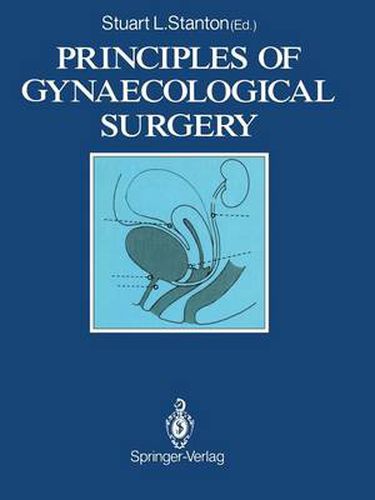Readings Newsletter
Become a Readings Member to make your shopping experience even easier.
Sign in or sign up for free!
You’re not far away from qualifying for FREE standard shipping within Australia
You’ve qualified for FREE standard shipping within Australia
The cart is loading…






This title is printed to order. This book may have been self-published. If so, we cannot guarantee the quality of the content. In the main most books will have gone through the editing process however some may not. We therefore suggest that you be aware of this before ordering this book. If in doubt check either the author or publisher’s details as we are unable to accept any returns unless they are faulty. Please contact us if you have any questions.
For a long time I have felt that the present gynaecological training for registrars lacked familiarisation and understanding of the basic principles of surgery. This is due to several factors. Firstly, the historical separation of gynaecology from general surgery which led to our development as an independent speciality (and which Victor Bonney foretold to our detriment when he opposed the formation of the College of Obstetricians and Gynaecologists as a separate body from the College of Surgeons). Secondly, a vast improvement in medical management of many gynaecological conditions has made surgical practice dull and an unquestioning daily routine with little or no surgical instruction for many junior staff. Thirdly, the arrival of subspecialisation has exacerbated this, as complicated surgery may be referred out by the general gynaecologist. Finally, the trend in further education towards writing an MD rather than taking an FRCS degree. The arguments for and against were set out in an editorial in the British Journal of Obstetrics and Gynaecology (1983), later taken to task in the ensuing correspondence. That editorial. together with the difficulty in finding up-to-date articles on surgical principles in one volume, were the catalysts for this book. With the help of colleagues from other disciplines, I have attempted to present recent advances side-by-side with modern-day gynaecological practice.
$9.00 standard shipping within Australia
FREE standard shipping within Australia for orders over $100.00
Express & International shipping calculated at checkout
This title is printed to order. This book may have been self-published. If so, we cannot guarantee the quality of the content. In the main most books will have gone through the editing process however some may not. We therefore suggest that you be aware of this before ordering this book. If in doubt check either the author or publisher’s details as we are unable to accept any returns unless they are faulty. Please contact us if you have any questions.
For a long time I have felt that the present gynaecological training for registrars lacked familiarisation and understanding of the basic principles of surgery. This is due to several factors. Firstly, the historical separation of gynaecology from general surgery which led to our development as an independent speciality (and which Victor Bonney foretold to our detriment when he opposed the formation of the College of Obstetricians and Gynaecologists as a separate body from the College of Surgeons). Secondly, a vast improvement in medical management of many gynaecological conditions has made surgical practice dull and an unquestioning daily routine with little or no surgical instruction for many junior staff. Thirdly, the arrival of subspecialisation has exacerbated this, as complicated surgery may be referred out by the general gynaecologist. Finally, the trend in further education towards writing an MD rather than taking an FRCS degree. The arguments for and against were set out in an editorial in the British Journal of Obstetrics and Gynaecology (1983), later taken to task in the ensuing correspondence. That editorial. together with the difficulty in finding up-to-date articles on surgical principles in one volume, were the catalysts for this book. With the help of colleagues from other disciplines, I have attempted to present recent advances side-by-side with modern-day gynaecological practice.